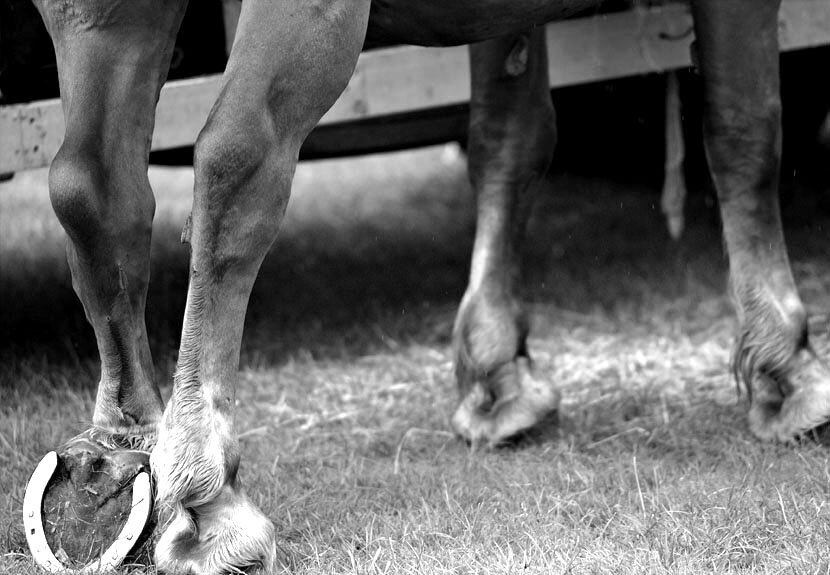
Laminitis Consultations
Laminitis is a serious condition that can range from the mild through to the life threatening. Management of the laminitic individual can be problematic, from identifying the cause of the laminitis through to assessing the status and finally designing a treatment program for the laminitic individual.
A pony showing severe rotation of the pedal bone. 23 degrees or rotation would be classified as a severe laminitis.
We all view laminitis as the classic rotation or sinking. However there can be a wide range of signs seen with horses. From the mildly uncomfortable all the way through to the rotation and sinking laminitis seen but there can be a wide variety seen.
When presented with a laminitis case it is important to consider some important points when we assess each case. Each case has to be considered on their own with some important points:
Why has the laminitis occurred?
Is there a metabolic disease driver of the laminitis? We would be looking for Cushings Disease or Insulin Resistance.
Is the laminitis due to a medication that has been administered? This would include corticosteroids
Is the laminitis secondary to sickness such as pleuropneumonia or a case of diarrhoea or secondary to an injury to another leg
What is the status of the horse now?
What is the pain level like?
What is the position of the pedal bones within the feet now?
What is the environment of the horse like? Can we make the horse more comfortable now by getting them in to soft bedding?
What team can we put in place to manage the horse?
We use blood tests to look for some specific metabolic diseases in laminitic horses or ponies. These would include:
Cushings Disease
Insulin Resistance
It is really important to work out the status of horses as having either of these conditions allows us to understand the driver for laminitis. Identifying this driver can allow us to start medication to address the condition.
Management of Laminitis.
Management is so variable between cases that our treatment plan will vary depending on the case.
Initial management is all around comfort and control of pain. This will be a combination of pain medication and controlling the environment. A deep sand yard is an ideal place for a laminitic horse or pony. The advantage of sand is it allows the horse to get the sand in to a position that they are comfortable. The deeper the better.
This environmental management is then combined with pain management. We routinely use Bute as a first line of attack but we can add other drugs such as Paracetamol or Gabapentin depending on the case. Each case is an individual.
X-rays are an important part to assess any changes to the feet. It is important to understand that often we will need to take serial radiographs to assess what is happening. The pedal bone can change on a daily basis. Depending on the horse we may elect to take several x-rays over a period of time.
The next step in the process is getting your farrier involved. This will often involve the application of special shoes to help make the horse more comfortable. Creating a team around your horse is so important and the team must be willing to work together.
Finally it is important to understand that the disease can change on a daily basis. The recovery period can be many months before returning the horse to ‘normal’. Normal may never be what it once was but we aim to get there. The process can take many months of continual management from the team around us.
Book Appointment
info@tevs.com.au
03 59775250
Somerville, Victoria



